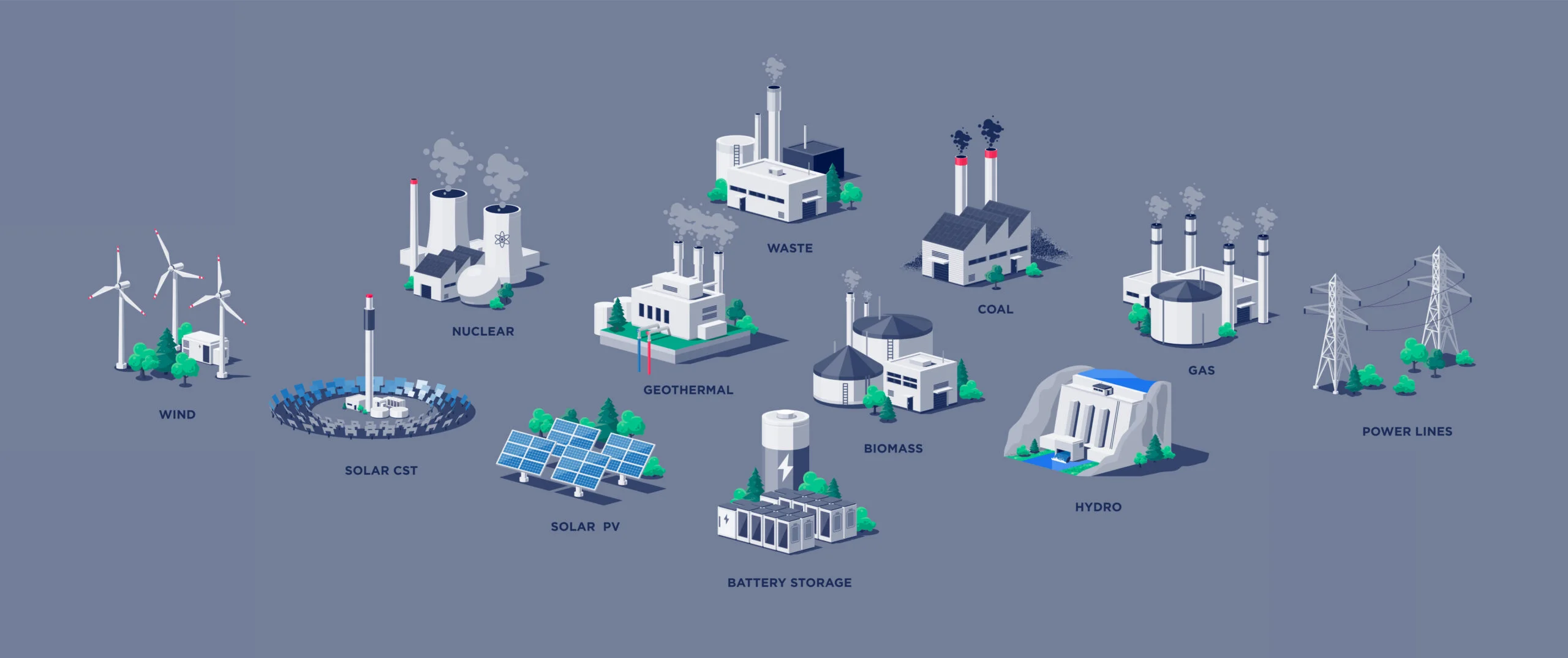For years, the energy landscape has been dominated by big, centralized generation—predictable, controllable, and neatly organized. But there’s a new player in town that can provide reliable energy assets to utilities when and where they need them through aggregate load shifting: distributed energy resources (DERs).
To some, distributed energy resources (DERs)—things like rooftop solar, customer-sited batteries, smart thermostats, and EVs—are a headache. They’re scattered, they’re intermittent, and they’re definitely not playing by the old rules. But here’s the straight truth: for utility operations, DERs are not just a challenge; they’re one of your greatest new assets for reliability and keeping the lights on.
The DER Market Speaks For Itself
Despite regulatory challenges and tariffs, distributed energy resources (DERs) dominated U.S. capacity growth, with 93% of additions (30.2 gigawatts) attributable to DERs in September 2025 alone. In fact, the distributed energy resource (DER) market is expected to hit $293.59 billion by 2034, indicating that despite market uncertainties, DER technologies remain a valuable—and viable—path to grid resilience, while defraying mounting peak energy costs.
The Reliability Revolution is Distributed
You know the drill. Peak demand hits, an unexpected storm rolls in, or a major unit trips. Suddenly, you’re scrambling to shed load, bracing for the worst, and praying the system holds. This is where the sheer muscle of aggregated DERs transforms from a scattershot of customer equipment into a powerful virtual power plant (VPP), one of many demand flexibility programs including demand response (DR), EV charging, and BYOD programs.
Your New Load-Shedding Superpower
Forget mandatory rolling blackouts as your last resort. DERs offer a precision-guided approach to managing system stress:
- Load Shedding on Demand: Through targeted programs like demand response (DR), you can access loads you never could before. On a scorching summer day, incentivizing thousands of customers to adjust their smart thermostats or briefly pause EV charging slightly can collectively shed megawatt-levels of load—without a single truck roll. This is the difference between a controlled system response and an uncontrolled outage.
- Localized Relief: Is a specific substation or feeder overloaded? Whether utility-owned or behind-the-meter, DERs are located exactly where the problem is. You can flexibly dispatch stored energy from customer batteries or curtail local consumption to alleviate congestion right at the bottleneck, deferring costly, complex infrastructure upgrades.
- The Power of Storage: Customer-owned batteries are the new peaker plant, but cleaner and faster. You can charge them when demand is low and dispatch that stored energy immediately to offset peak load when you need it most. They provide instantaneous, dispatchable capacity that is vital for grid stability.
Move Beyond “Keeping Up” to “Getting Ahead”
This isn’t about if you’ll integrate DERs; it’s about how you’ll master them and when. The influx of customer-owned generation isn’t slowing down, and embracing it means better operations for you and better service for your customers.
The Operational Next Step: Get the Right Tools
To unlock this power, you need to arm yourselves with the right technology. This is where a robust Grid-Edge distributed energy resource management system (DERMS), which aggregates the behind-the-meter distributed energy resources (DERs) increasingly available in places like residential, commercial, or industrial properties, becomes your new best friend.
A Grid-Edge DERMS platform provides the brain to manage the brawn. It gives you:
- Visibility: Knowing what’s out there and what it’s doing in real-time.
- Control: The ability to aggregate and dispatch thousands of individual resources as a single, reliable unit.
- Coordination: Ensuring DERs work with the grid, not against it, maintaining voltage and frequency stability.
BTM DERs & Reliability
Using functionality like Topline Demand Control (TDC), grid operators can rely on dependable outcomes from behind-the-meter distributed energy resources (DERs). A combination of the Shift Grid-Edge DERMS, forecasting, AI, and model predictive control, TDC works in real-time, optimizing each device at a granular level to ensure optimal outputs. Practically, this means that grid operators or program managers can input the desired load shift, and TDC will work to ensure that outcome every time, future-proofing your demand flexibility programs while deferring expensive grid upgrades.
It’s Time to Get Pumped About Distributed Energy Resources (DERs): Conclusion
The grid of the future is here, and it’s full of distributed power waiting to be harnessed. Stop viewing DERs as just “customer stuff” and start seeing them as the newest, most flexible power plant on your system. Master them, and you won’t just be managing the grid—you’ll be actively making it stronger, more resilient, and far more reliable.





